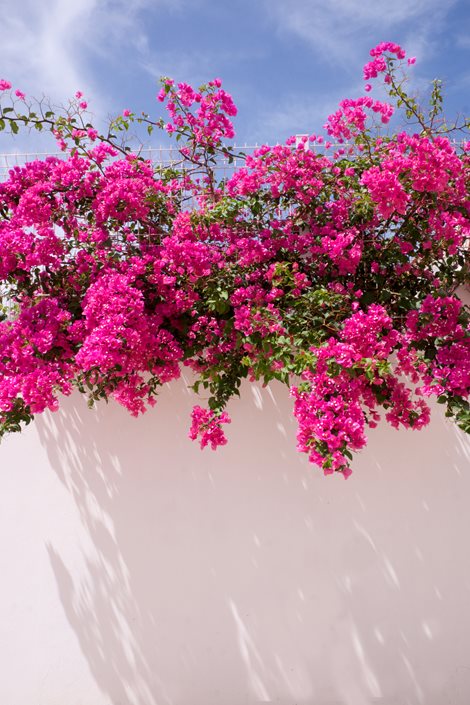
Bougainvillea is a beautiful flowering vine known for its vibrant and long-lasting blooms. Here's a step-by-step guide on how to grow bougainvillea:
Select the Right Location: Bougainvillea thrives in full sun, so choose a location in your garden that receives at least 6-8 hours of direct sunlight each day. Ensure that the area has well-draining soil, as bougainvillea does not like wet or waterlogged conditions.
Prepare the Soil: Bougainvillea prefers slightly acidic to neutral soil with good drainage. Before planting, amend the soil with organic matter such as compost or well-rotted manure to improve fertility and drainage. If your soil is heavy or clayey, consider adding perlite or sand to improve drainage.
Planting: Dig a hole that is twice the size of the root ball of the bougainvillea plant. Remove the plant from its container and place it in the hole, ensuring that the top of the root ball is level with or slightly above the surrounding soil. Backfill the hole with soil and gently firm it around the plant. Water thoroughly after planting to settle the soil.
Watering: While bougainvillea is drought-tolerant, it still needs regular watering to establish and grow. Water deeply once or twice a week, allowing the soil to dry out between watering sessions. Avoid overwatering, as it can lead to root rot. During the hot summer months, you may need to increase the frequency of watering.
Training and Support: Bougainvillea is a climbing vine that needs support for proper growth. Install a trellis, fence, or other support structure near the plant and train the vines to grow onto it. You can use soft ties or plant clips to secure the branches to the support as they grow.
Pruning: Bougainvillea benefits from regular pruning to maintain its shape and promote more prolific blooming. Prune in early spring before new growth begins. Remove any dead or damaged branches and trim back long, leggy growth to encourage bushier growth and more flowers. Be aware that some bougainvillea varieties may have thorns, so wear gloves and use caution while pruning.
Fertilizing: Bougainvillea is a heavy feeder and responds well to regular fertilization. Use a balanced fertilizer with a ratio such as 10-10-10 or 20-20-20. Apply the fertilizer according to the manufacturer's instructions, typically every 4-6 weeks during the growing season. Avoid excessive fertilization, as it can lead to excessive foliage growth with fewer flowers.
Protecting from Cold: Bougainvillea is sensitive to frost and cold temperatures. If you live in an area with cold winters, consider growing bougainvillea in containers that can be brought indoors during the winter or provide protection by covering the plants with frost blankets or moving them to a protected area.
Pest and Disease Management: Bougainvillea is generally resistant to pests and diseases, but it can occasionally be affected by aphids, mealybugs, or caterpillars. Monitor the plant regularly and take appropriate measures to control pests if necessary. Good air circulation and avoiding overhead watering can help prevent fungal diseases.
With proper care and attention, bougainvillea can reward you with stunning displays of colorful blooms. Enjoy their vibrant beauty in your garden or as a climbing vine on walls, fences, or trellises.

No comments:
Post a Comment